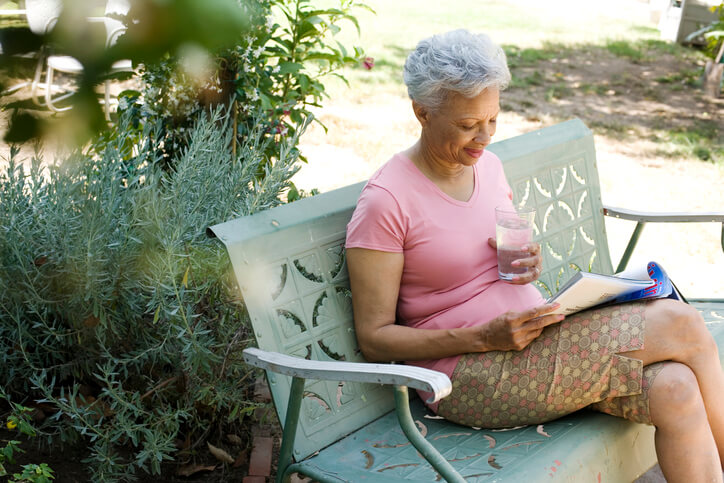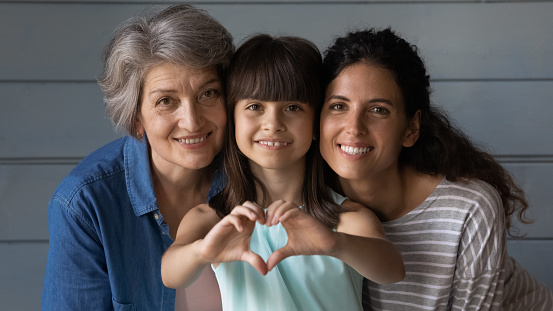When people think about cancer prevention, most folks know the basics. For example, it’s important to eat nutritious foods, get plenty of physical activity and avoid smoking.
But one thing that can get overlooked is sun safety. Protecting yourself and your family from the sun’s ultraviolet rays can help reduce the risk for different skin cancers, including melanoma, the most serious type.
The American Cancer Society estimates that more than 7,600 people die of melanoma yearly, with exposure to UV rays considered a major risk factor. Almost 100,000 new cases are diagnosed every year. Your risk of melanoma increases as you age. The average diagnosis age is 65, however melanoma is one the most common cancers in young adults.
Despite the many dangers of skin cancer, people still don’t know what they should do to keep themselves safe. Often, it just comes down to habits and choices. Ask yourself: How can I be more vigilant about the risks in all areas of my health—from physical and mental health to financial wellbeing?
Start with these six actions:
What You Can Do, Starting Today
1. Wear Sunscreen Every Day
You should get in the habit of wearing sunscreen every day—make sure it’s broad-spectrum and water-resistant with an SPF 30 or higher. That also includes when it’s overcast or snowing. Even when it’s cloudy, up to 80% of UV radiation can reach your skin.
You’ll need about two tablespoons of sunscreen to apply to your whole body—most people don’t use enough. Make sure to put more on every two hours, or more frequently if you get wet.
2. Cover Up With Protective Clothing When You’re Outside
Some clothes have UV protection built into the fabric—this is called a “UPF” or ultraviolet protection factor. But even without UPF-rated clothing, you can still protect yourself with long-sleeved pants and shirts, UV-rated sunglasses and a wide-brimmed hat (in addition to sunscreen, of course).
When picking your wardrobe, aim for dark colors, which provide more protection than lighter shades. Also mind the fabric type — densely woven clothes like denim or synthetic fibers are better at protecting your skin than thin fabrics.
3. Find Some Shade Whenever Possible
It’s best to avoid sunlight when UV rays are at their strongest, between 10 a.m. and 2 p.m. You can do this by working shade into your trips outside. Pack an umbrella for beach vacations or plan picnic spots near covered areas.
4. Get Abnormal Moles or Marks Checked Out
Self-monitoring is an important part of self-care. So, aim to do a skin self-exam on the front and back sides of your body—many doctors recommend this once a month.
When looking at your skin, search for new or changing spots, sores that don’t heal or asymmetrical moles with irregular borders. Call your doctor if you notice anything unusual or something that concerns you. They can do a physical exam and help determine a diagnosis.
5. Tell Your Doctor About Your Family History of Cancer
Write down any family members who have had skin cancer, or other cancers as well—since other cancers may be linked genetically to melanoma. People who have an immediate family member diagnosed with melanoma have a 50% higher chance of developing the cancer themselves.
6. Avoid Tanning Beds
It’s a myth that tanning beds are safer than sunlight—they’re not. Tanning beds can emit both UVA and UVB radiation, which are the same rays emitted by the sun. Both rays can increase the risk for skin cancer. In fact, tanning beds actually may be more dangerous since the rays stay at the same intensity compared to sunlight which varies in intensity during the day.
If you need more convincing, read up on the former Miss Maryland—she tanned at least four times a week starting at age 17, and by 20 years old, was diagnosed with melanoma.
Protect Your Skin, Protect Yourself
Skin cancer can be dangerous, but there are things you can do to help keep yourself safe. After all, preventive care is an important part of your overall health and wellness. And a big part of that is protecting your skin from UV damage.
How do you protect your skin when you’re outside? What other tips do you have for staying out of the sun? Let other readers know in the comments.







Many Thanks for this information. anyone that reads this article should pass this information to friends and family and coworkers
I’ve been taking Niacinamide for a few years and last year was my first that I didn’t have to have pre cancerous spots frozen.
Good advice. I have had 7 minor surgeries for basal cell carcinoma of the skin on my face and chest. These areas are on the left side due to driving daily for hours when working. So, I’ve worn sunscreen, wear a broad brimmed hat as well as long sleeve top (and sunglasses too) whenever outside. Some people comment and wonder why I always wear a hat and long sleeves, generally thinking it isn’t necessary. Your information is good for them to be informed. Thanks so much.
I protect myself with 100% clothing, even wear gloves. One thing you don’t think of is the UV light coming in from the side and front windshield of a car. The sun actually hearts my hands and I wear gloves when driving. My side window, the upper part is covered with cardboard. Over the years I have had a lot of skin problems on the left side of my face. This has solved my problem.
Great tip, Gary! Thanks for reading.
I’m a 40 year plus survivor of surgeries, and topical chemo treatments. Quarterly visits to my MOHS surgeon for checks with one of those visits being all an all body exam. I use myself as an example to all my fair skinned grandchildren.
Drivers watch the left side of your face especially your ear. Passengers watch your right side. Also protect your nose and eyes.
Thank you for Hartford Insurance.
I recently had a basil cell carcenoma removed from forehead. Also using scar gel twice daily to help prevent scaring. Am also a breast cancer survivor.
After reading this all I could imagine was long blue jeans and long sleeve blue jean jacket, humid over cast day with 90 degrees temperature.
Skin cancer is no joke. I have had 3 surgerys and 1 pending. Please use sunscreen, go out after 2:00, wear a hat , year round .
If I can help one person with my story, it will be one less surgery.
I cut the toe out of a pair of tube socks and wear them on my arms when I am out doing yard work. They work great and protect from scratches as well.
Great suggestion, Sharon. Thanks for sharing!
Another little known fact is to avoid orange juice and other citrus juices on a day in which you will be out in the sun. Studies have found that orange juice causes photosensitivity and so increases your risk of skin cancer.